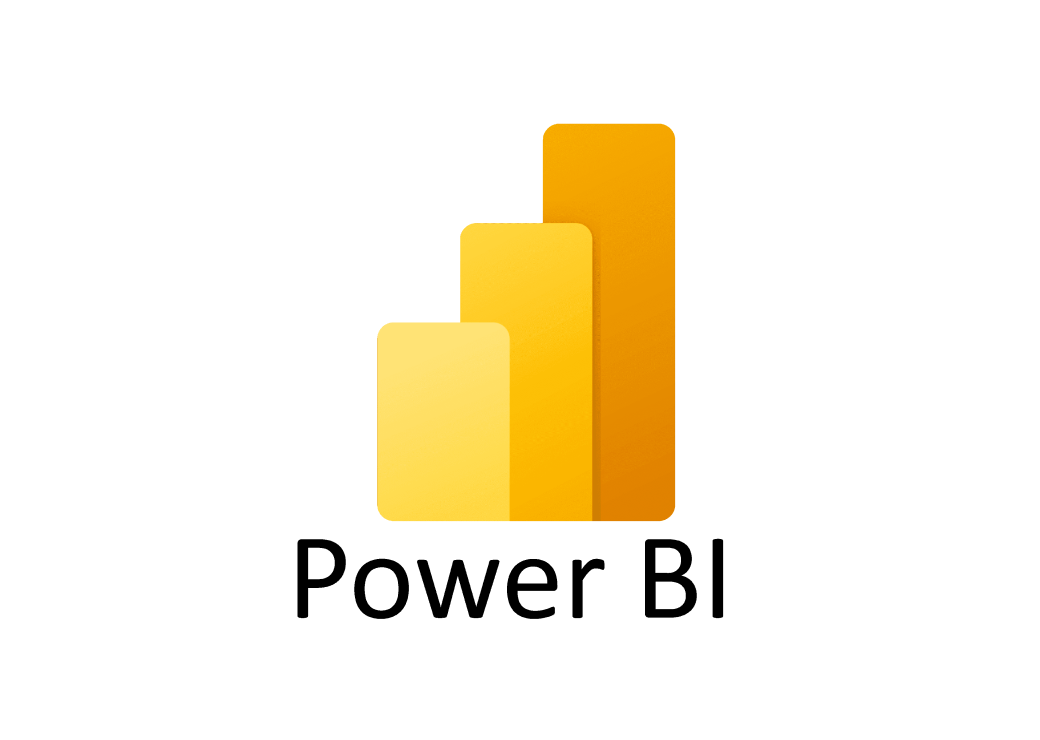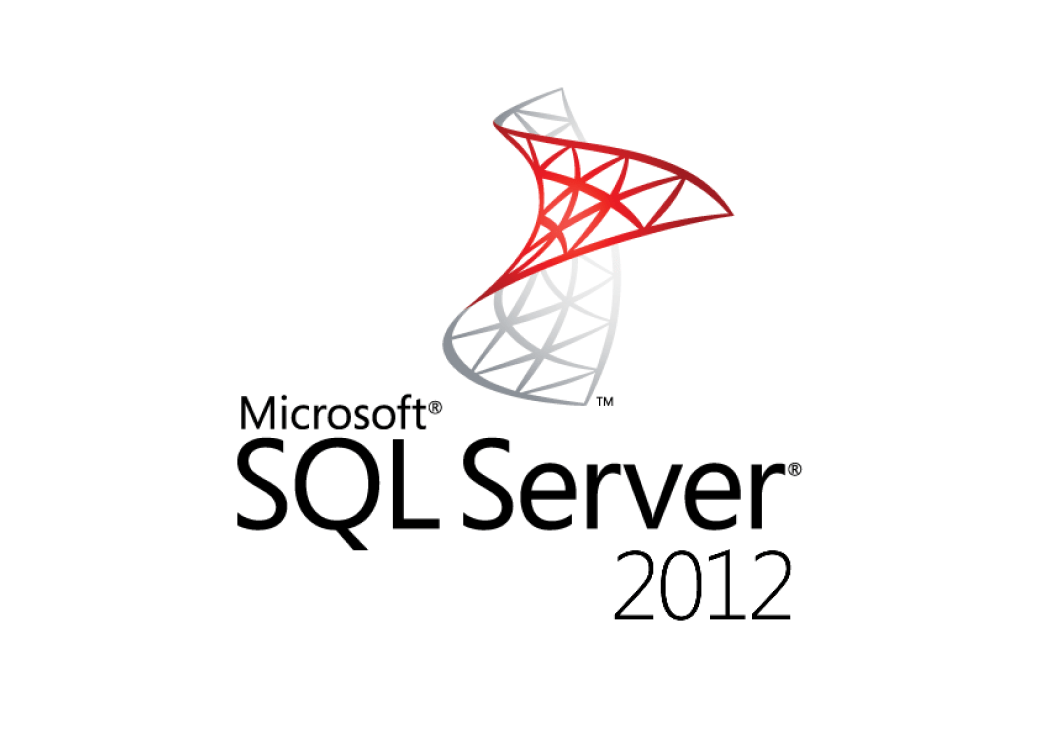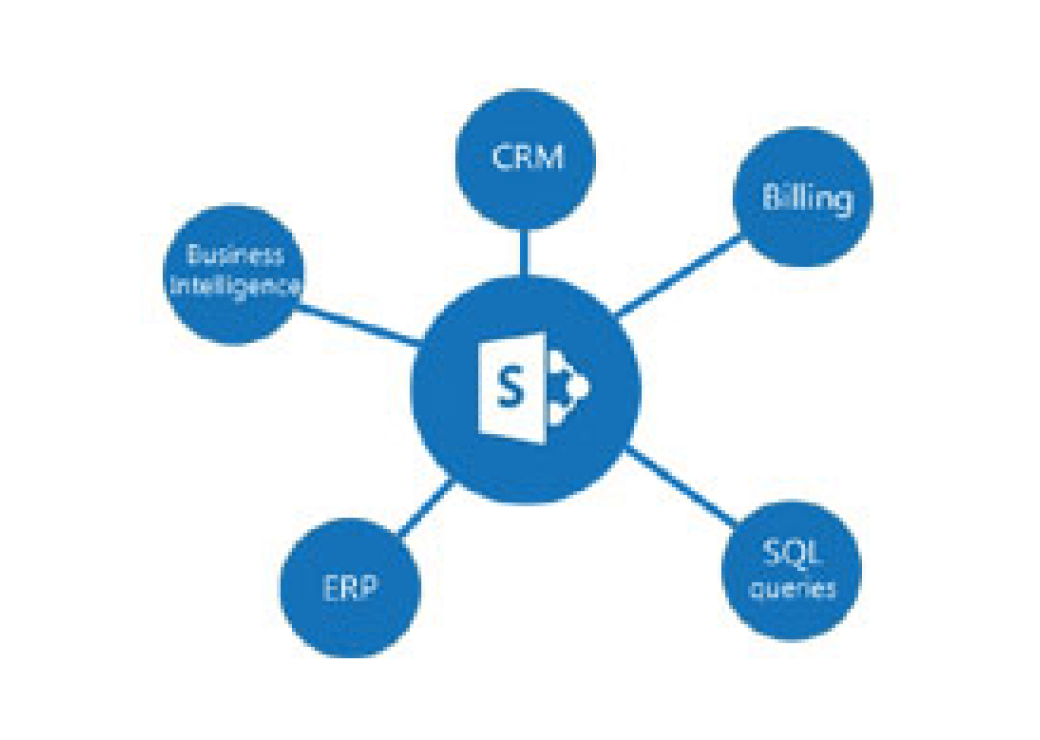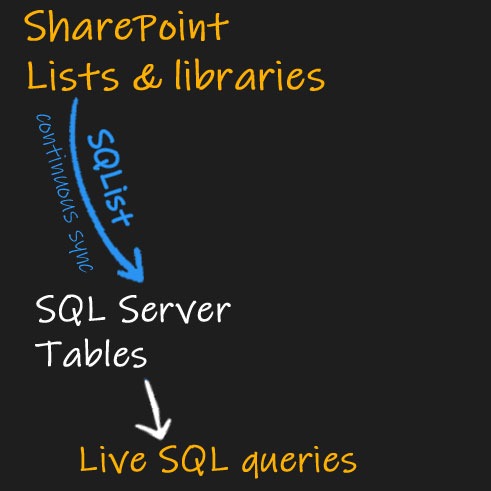
Export SharePoint lists to SQL Server tables
SQList helps you query live SharePoint data using direct SQL queries in SQL Server.
How SQList exports SharePoint lists and libraries to SQL Server tables
SQList exports your SharePoint lists as fully synchronised SQL Server tables. Querying your SharePoint list data from SQL tables will also have a dramatic effect on how quickly and efficiently you can query your data.
But for something that will save your organisation a lot of time and money, it is very simple to achieve.
Here’s how you do it:
- Create a database in SQL Server, then configure your SharePoint connections and database connections within SQList.
- Select the SharePoint lists you want to export from SharePoint to SQL Server.
- SQList will start to replicate your SharePoint data and will continuously update them, so you’re always querying live data.
- You’ll find tables in your SQL Server database corresponding to each SharePoint list you selected. You’ll also see a table for every lookup column with an auto-generated database relationship to the parent table.
That simple set up process gives you everything you need for unlimited live queries of your SharePoint data at lightning-fast speeds.
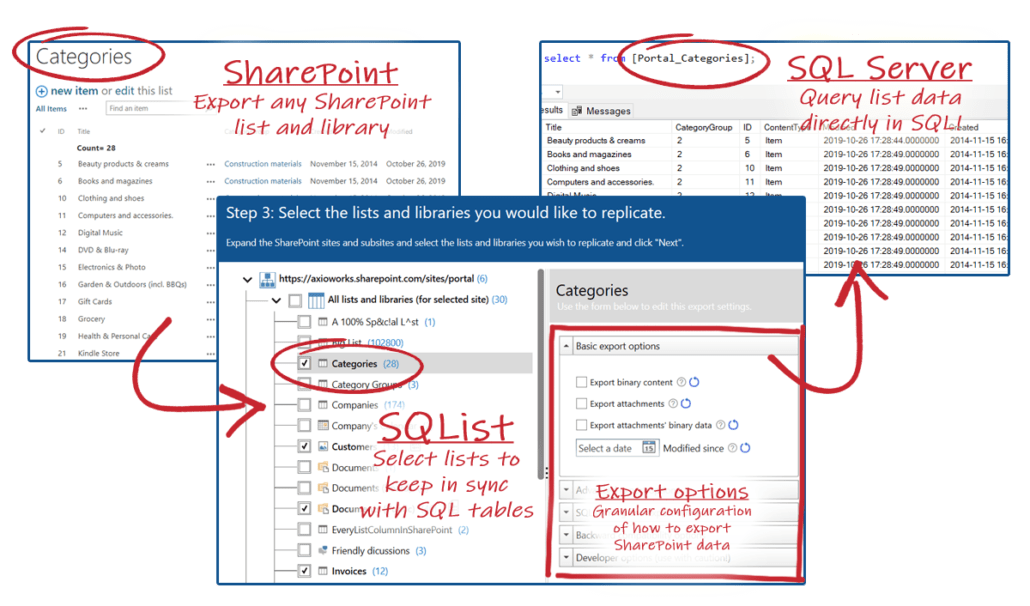
Watch a step-by-step demo of this process or read this detailed article, sign up for FREE 30-day trial to see SQList in action with SQL Server.

There is a wealth of business intelligence to be found in your SharePoint data. Using SQList to sync that SharePoint data with SQL Server puts all of your data in easy reach.
You’ll already know the pitfalls and frustrations of trying to query SharePoint data (in any situation, never mind live). With SQList and some basic SQL Server know-how you can make those frustrations a thing of the past.
Limitless querying. Lighting-fast responses to your queries. Live and using up-to-the-second data from SharePoint. Get the answers you need to the questions that matter more quickly and more efficiently than ever before.
SQList connects to SharePoint via HTTP/HTTPS and to SQL Server via TPC connections, so there are no changes that have to be made to the your firewall and security policies.
